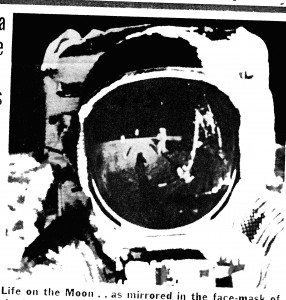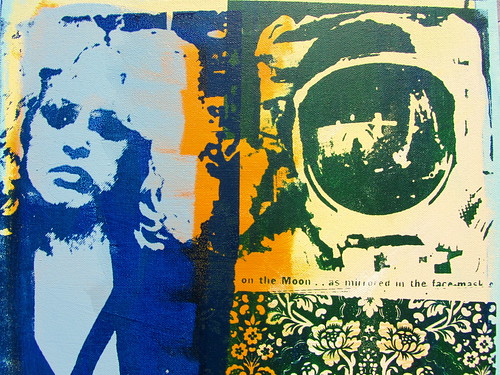The only way I am going to to this is by looking back over my notes (below) and work out what exactly I want to achieve.
Printmaking has always been the poor relation of the art world. The print is something we traditionally buy as a reproduction of a serious piece of work (painting). The tradition of printing has evolved and the print maker maybe an artist?
‘Peter’s exhibition was inspired by iconic images he used when he was at art school in the 70’s on the theme of Beauty and the Beast – inc Sid and Nancy and Guy the Gorilla! – and I think the results are really bold and impactful.’
Printmaking 2011
My heroes have grown old with me or they have died – maybe their death has been a way to freeze time, stop the aging process – not only for them but for me also?
Juxtaposing images, either as a collage or printing is not simply a decorative process it is a complicated exercise. The mind always tries to create a narrative between images. The juxtaposition of arbitrary marks, color, photographs etc. will always tease and trick the mind into rationalizing what it is trying to process and attempt to make physical world references – in other words make sense of what it is trying to analyze. Continue reading ?
As an 11 year old I watched the first moon landing in 1969. I was mad about everything to do with space travel, I would read anything that was about rockets, cosmonauts and astronauts. Later in my life I shook the hand of a man who shook the hand of my all time hero Yuri Alekseyevich Gagarin, that was for me like touching history, if only secondhand (excuse the pun).

I have just been rummaging through old boxes of stuff and found the picture above – yellowed and faded – it still makes my heart flutter. I wish I’d been to the moon.
Woodcuts
‘Bernard’s ideas fired Gauguin’s enthusiasm, and Bernard’s important painting Breton Women in the Meadow (1888; France, priv. col.), a starkly drawn and crudely painted composition depicting a Breton Pardon, enabled Gauguin to go on to produce his own revolutionary painting Vision after the Sermon: Jacob Wrestling with the Angel (1888; Edinburgh, N.G.) in a similar style and composition. Bernard exhibited Cloisonnist paintings and prints of Breton inspiration alongside Gauguin and other artists at the Exposition Universelle of 1889, at the Café Volpini. This exhibition acted as a catalyst on the Nabi group and drew a number of new adherents to the Pont-Aven school.’
Text from MoMA.org (original source Oxford University Press)


